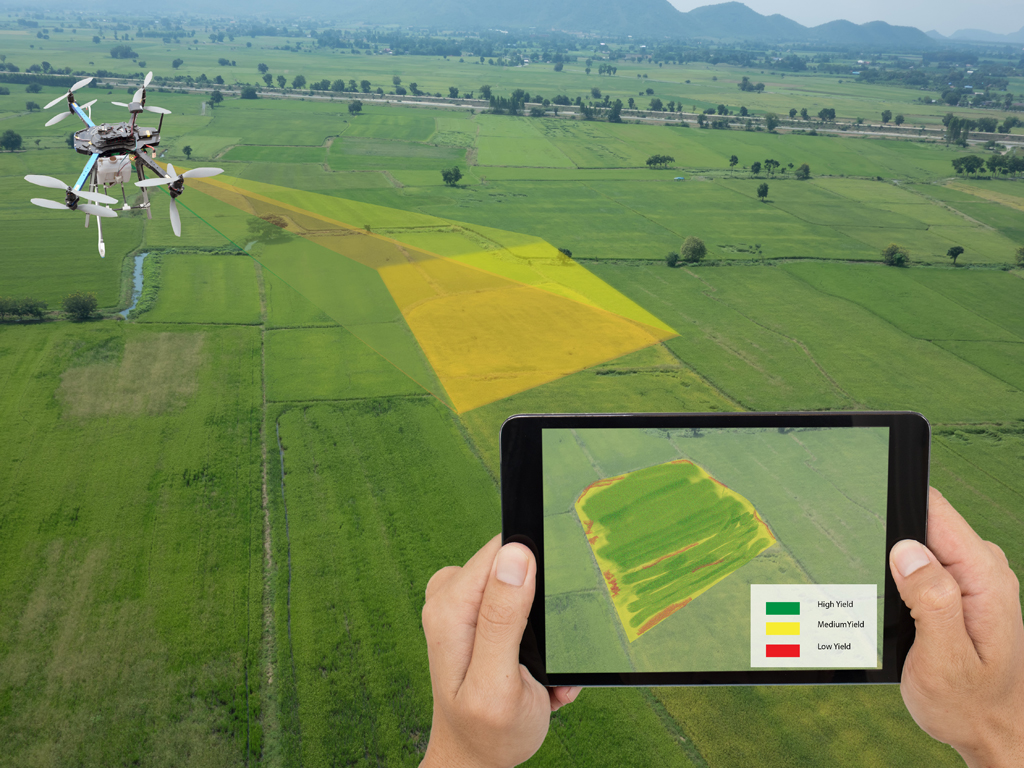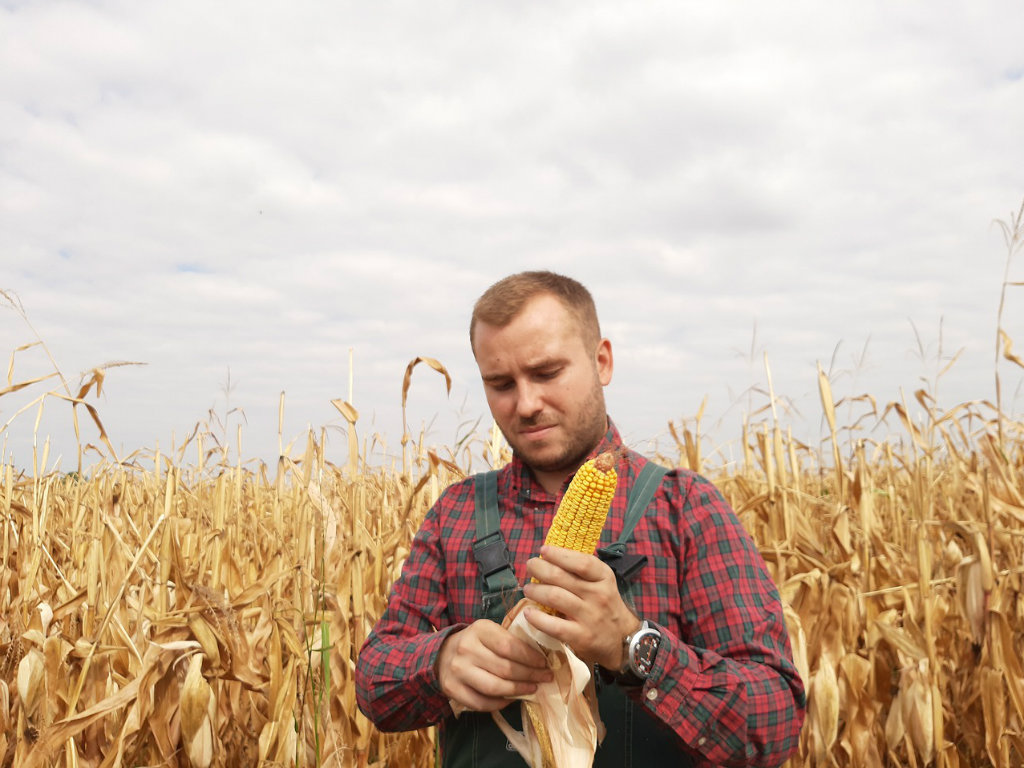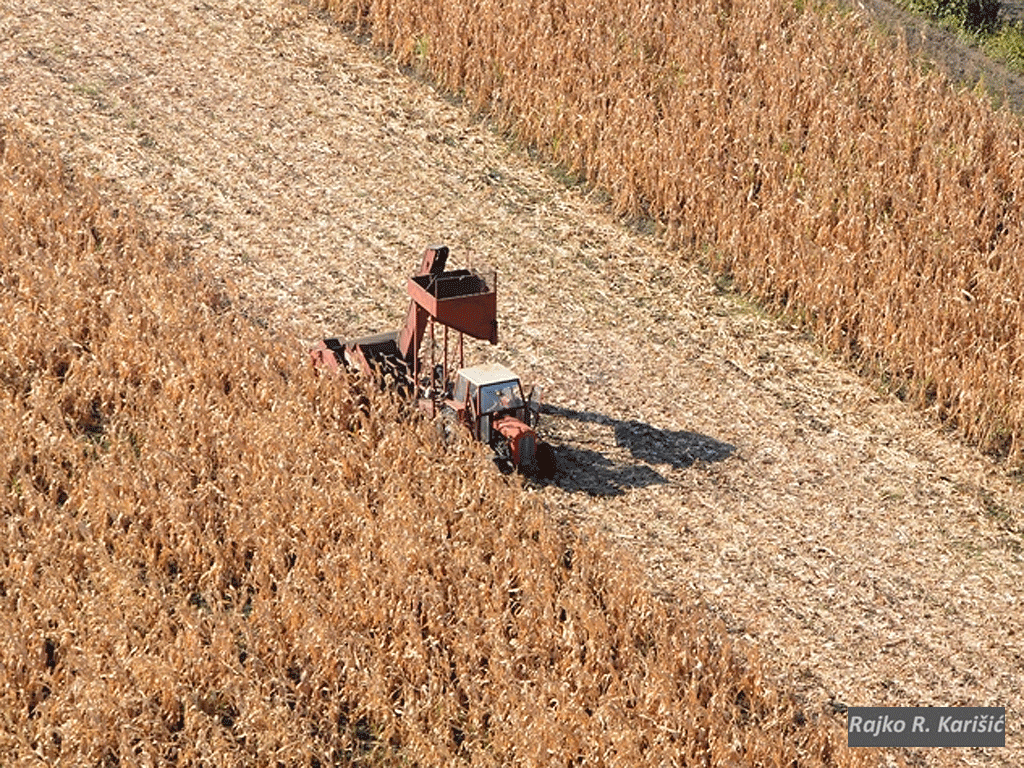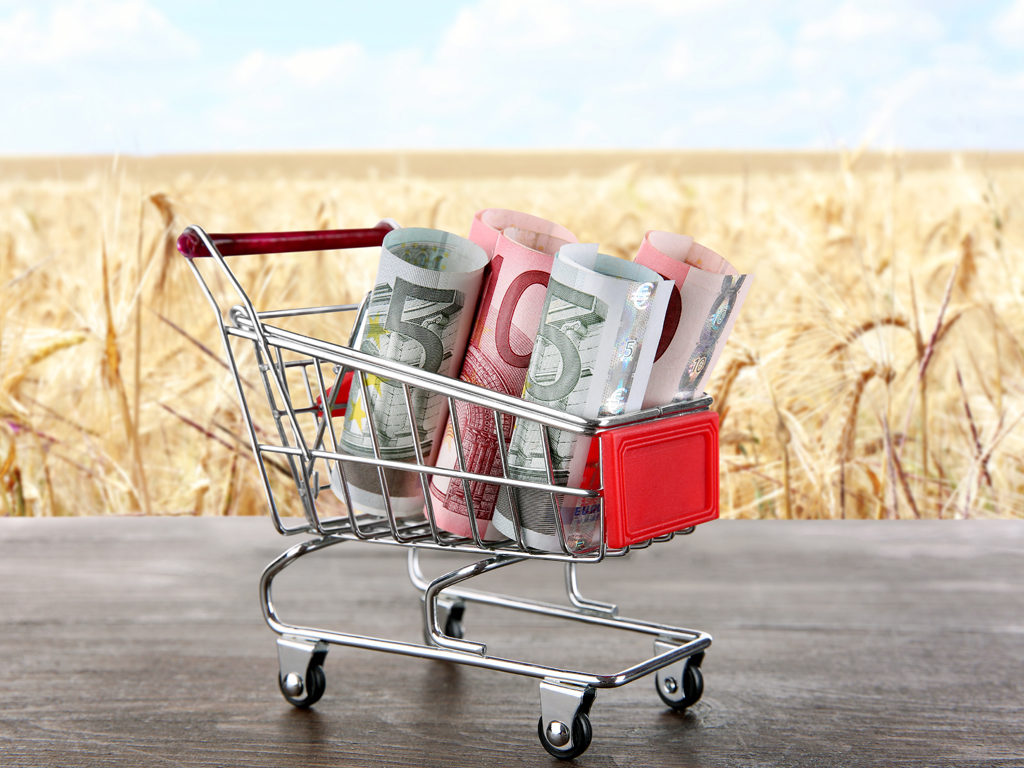Digitalization of Agriculture – Who is going to use drones and blockchain on farms if our tractors are 20 years old?
Source: eKapija
 Monday, 14.11.2022.
Monday, 14.11.2022.
 00:27
00:27
 Monday, 14.11.2022.
Monday, 14.11.2022.
 00:27
00:27
(Photo: Beros919/shutterstock.com)

And what is the reality? How practicable are technologies such as artificial intelligence, robotics, the Internet of things, 5G, blockchain in agriculture? How does that affect the Serbian farmer who still watches the skies in worry, hoping that the coming storm will pass him by or at least not destroy all of his crops? How can we talk about drones in agriculture if we know that the average tractor in Serbia is in use for more than 20 years? Even if we modernize the equipment, who will use it, if the average Serbian farmer is well into his 60s? These are just some of the questions we tried to answer.
What does the digitalization of agriculture mean?
One of the pillars of the European Green Deal is the “Farm to Fork” strategy. The key to success for sustainable food production and reaching the lofty goals for year 2030 - reducing the need for pesticides by 50% being one of them - is the digitalization of this sector. And what does it exactly entail, Dr Marko Kostic, the Associate Professor at the Department of Agricultural Engineering at the Faculty of Agriculture in Novi Sad explains for eKapija web portal.
– Digitalizaiton of agriculture entails the introduction of modern information technologies in the agricultural sector in order to improve the decision making system with the goal of reducing the need for agrochemicals, increase the yield and quality of crops and lower the contamination of the environment with the harmful substances used in farming, our interviewee explains.
According to him, the current decision making practices in crop production are based on the traditional patterns, previous experience, individual intuition but mostly on the habits inherited from the past. However, these methods of managing land resources bring results which do not agree with the amount of resources invested.
– Beside the unreliable management and decision making, conventional agriculture relies on the average parameter values without taking into account the heterogeneous land structure. Each field is treated as one production unit whose condition is assessed comprehensively as the average value of the condition of all of its parts, whereas the measures are applied equally on the whole surface of the field. The results, according to the present variables of the soil condition, vary quite a lot, and in conclusion they are lower than expected and much lower than the highest possible value, Dr Kostic states and adds that there are still discussions about which agricultural branches could precision agriculture technologies be used on, is it just farming or other agricultural branches as well.
Certain technologies require knowledge the farmers lack
According to the data of the European Commission, there are around 11 million farms in the EU, with the vast majority classified as family farms. There are 22 million EU residents who work regularly in the farming sector and 44 million workers are employed in the entire agrifood sector. Which technologies could they implement in their farms? Our collocutor explains that the so-called “precision farming`` concept is based on the application of the GNSS (GPS) and GIS technologies, sensor detection, yield monitoring, remote monitoring systems (satellite and drone mapping), ISO Bus system based on variable rate technology (VRT), the Internet of Things and analyzing big data.
– Out of all above-mentioned technologies, GNSS has the most practical use. It yields visible results to users regarding easier field work and more precise navigation of farming machines on the immense fields, it doesn`t require expertise and it has a fairly reasonable price.
Young farmers are the minority (Photo: Pixabay / alex_agri)

Other technologies are significantly more complex, require expertise from various fields, the effects of application are unclear all of which definitely makes farmers slower in accepting them, out collocutor points out.
– One of the greatest obstacles for the application of modern technologies in agriculture are high acquisition costs and low asset turnover. In addition, there is the unfavourable age structure of farmers ( the average age is over 50), low level of education, production risks and other. In the future, when the cost of technologies decreases and younger generations who understand information technologies better take over, these technologies will be significantly more welcomed.
In Serbia, most farmers are over 65
And how does this all affect the Serbian farmer? He`s not in his prime anymore, he drives a tractor two decades old and works on a family farm. The survey of the Statistical Office of the Republic of Serbia from 2018 shows that most farmers in Serbia, 42.5 %, are over 65, whereas farmers in the 35-44 age range make up 8.7% of all farmers. The total number of farms is 564,500, out of which 563,000 are family farms. The workforce on the farms consists of 1,337,000 workers, there are around 452,000 tractors in the machinery park, out of which 86% are in use for over 20 years.
The average tractor in Serbia is 20 years old and older (Photo: Rajko Karišić)

– Compared to other, more developed countries, Serbia is partially behind when it comes to application of information technologies in agriculture, but not as much as it`s in worse financial situation. According to the research done as a part of the Smart-AKIS international project, which brought together scientific institutions from several European countries and one from Serbia, farmers hesitate in using new technologies for similar reasons. In that sense, we can say that our agriculture is on par with
the leading countries, Dr Kostic says.
Free mobile applications for crop monitoring
One of the common misconceptions is that these technologies are only built for big producers. The application of the precision farming concept is certainly not only meant for big farms, it is a technological concept which isn`t apriori tied to expensive machines, our collocutor emphasizes.
– There are plenty of tools that are currently either available to everyone or are reasonably priced and that contribute to better farm management. Mobile applications that are mostly free have an advantage and they can be used for crop monitoring, alarming in case of deficit in soil nutrients or soil disease. Also, there are free GIS platforms for computers containing geographic data from various sensors. Detection by sensors is more and more accessible, whether it`s done for nearby or remote objects and it enables timely detection of the problems on the field, Kostic says.
Despite digitalization, further price increase is expected (Photo: Africa Studio/shutterstock.com)

Nevertheless, the average farmer is not able to apply the complex data analysis from the increasing number of sources and therefore must employ the assistance of specialized services, which is an additional cost, our collocutor says.
–The farmers are aware, at least in theory, that new technologies bring certain benefits but I think they`re are not really sure how they do that because they can`t see how they really work. Often, there are solutions which are not adjusted to the point of view of an average farmer which means they are doomed to fail from the start. It is difficult to expect that farmers who have to organize the entire farm business can apply, on their own, all possibilities brought on by the industrial revolution 4.0 which implies the need for creation of additional occupations in agriculture based primarily on support in collecting and processing the data, Kostic points out.
Agriculture without people will never be possible
As the technology advances, there was talk about the use of Digital Twins in farming as an invention that would bring about a revolution. It is a digital representation of a real-world thing such as fields, animals, equipment which can be monitored remotely. For example, the digital representation of a cow can alert the farmer about the poor health of the animal without the physical exam. However, the future in which a farmer monitors the production from his home or office, without having to be present on the farm, is akin to science fiction. Our interviewee points out that agriculture without people is not possible nor it will ever be.
– In the future, monitoring all parameters relevant to production will certainly be significantly easier which means that prediction, standardization and the quality of product will be improved as well. Agriculture is too complex to leave entirely to machines. A farmer as the main actor with his lucidity and prior experience will always need to make a final decision on what to do in a specific moment. That level of intuition and comprehensiveness machine algorithms will not reach anytime soon, eKapija`s collocutor says.
And what will happen to the price of food? One of the things that the digitalization of agriculture promised is that thanks to technological advancement there will be more food which will consequently cost less. However, that will not happen that easy.
– The price of food will depend on the market, that is,on the relationship between the supply and the demand. Taking into account that the production under the open skies is becoming riskier due to climate excesses that are becoming more common, that variables in production largely depend on the climate (over 80%) and that climatology doesn`t have the option of early predictions of weather conditions on a field level which would then be the basis for developing activity strategies, the chances are that the primary agricultural products market will face turbulent changes with increase in prices, concludes Dr Marko Kostic from the Department of Agricultural Engineering at the Faculty of Agriculture in Novi Sad.
Marija Dedic
Companies:
 Poljoprivredni fakultet Novi Sad
Poljoprivredni fakultet Novi Sad
Tags:
Faculty of Agriculture in Novi Sad
Marko Kostic
digitalization in agriculture
drones in agriculture
Digital Twins on farms
digitalization of agriculture
Fork to Farm strategy
sustainable food production
precision agriculture
smart agriculture
agriculture without people
price of food
special edition newsletter
Digital Transformation Roadmap to eFuture
Comments
Your comment
Most Important News
Full information is available only to commercial users-subscribers and it is necessary to log in.
Follow the news, tenders, grants, legal regulations and reports on our portal.
Registracija na eKapiji vam omogućava pristup potpunim informacijama i dnevnom biltenu
Naš dnevni ekonomski bilten će stizati na vašu mejl adresu krajem svakog radnog dana. Bilteni su personalizovani prema interesovanjima svakog korisnika zasebno,
uz konsultacije sa našim ekspertima.


 Izdanje Srbija
Izdanje Srbija Serbische Ausgabe
Serbische Ausgabe Izdanje BiH
Izdanje BiH Izdanje Crna Gora
Izdanje Crna Gora


 News
News






